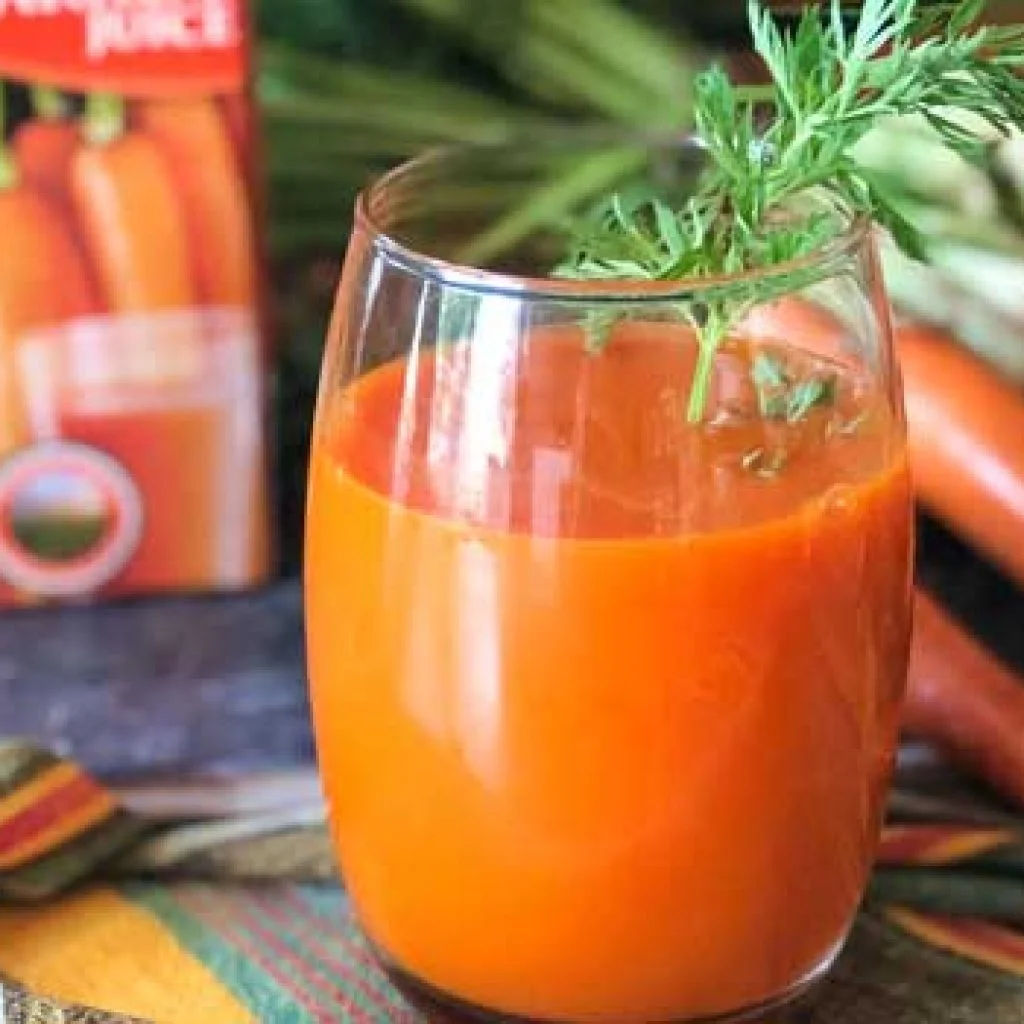What is so different about Rugani Carrot Juice?
 There is considerable ignorance concerning what makes the difference when it comes to juice. It is the intention of this article to clarify what makes a good –or bad- juice. The principles that govern quality are simple. However, much confusion shrouds this simplicity in order to mask cheaper and inferior products. I hope that once this article has been read by the reader, he /she will be in a position to discern the difference between various juices –including carrot juices.
There is considerable ignorance concerning what makes the difference when it comes to juice. It is the intention of this article to clarify what makes a good –or bad- juice. The principles that govern quality are simple. However, much confusion shrouds this simplicity in order to mask cheaper and inferior products. I hope that once this article has been read by the reader, he /she will be in a position to discern the difference between various juices –including carrot juices.
The issues covered in this article will include
- Seasonal production vs all year round availability
- Reconstituted Concentrates vs Fresh Juices
- The acid /sugar reward –the challenge of juices
- “Life Force” and its Bio availability
Carrot Juice is vastly different to fruit juices.
Seasonal production vs all year round availability
Fruit is seasonal. This means that the harvest of fruit occurs over a short season. Both the harvest and processing of the crop must occur during a small window period. If all the juice were to be freshly packed, not only would the factory have to be extremely large, but also it would then have to stand idle for the rest of the year. This option is not economically feasible.
There is therefore an interim stage in the manufacture of fruit juices. The harvested fruit is squeezed, and then converted into a concentrate. Concentration is a process of evapouration, the juice is reduced to around one sixth of its original volume. This process serves to preserve the fruit by reducing the water activity level to a point where bacteria can no longer thrive. It is then aseptically stored, and can have a rack life of up to three years. (Just for interest, there are three ways to naturally preserve food; drop the pH, reduce water activity, or increase saline content)
This concentrate is a fraction of the original volume, and is therefore far cheaper to transport. The concentrate fruit market is a global commodity market, and it has all the traits of the horse-trading and price undercutting that typifies commodity markets. A concentrate will eventually arrive on the shores of some country, where a juice factory has purchased it. Juice factories do not handle freshly harvested fruit; they handle concentrates purchased on the concentrate commodity market.
Carrots are not seasonal. In South Africa –due to its spectrum of climate types- produces a fresh carrot every day of the year. The Rugani carrot juicing facility is a family owned operation. The farm produces fresh carrots every weekday all-year-round. These freshly harvested carrots are only a few hours old when they enter the process. The company is proud of this achievement. The date of harvest, as well as the time of filling the container, is displayed on each container. This is surely a world first, and takes the meaning of tractability and freshness, to a new level. Just imagine trying to trace the date of harvest and origin of a concentrate!
The farm covers an area of 2600 Ha of irrigation ground in three locations. Each location having been chosen to supply carrots in its optimal season. The factory therefore enjoys a constant supply of freshly harvested carrots every day it produces juice. The company exploits this competitive advantage to its maximum by immediately pasteurising and bottling this fresh juice. The motto of the company is “Harvested at sunrise and sealed away by sunset”.
The process is also an extraction process that accesses the cell sap inside these -very much alive -carrots. The process also adds No Water, No Sugar, No Preservatives, nor Colourants. The only additives are a small dosage of Ascorbic Acid (Vitamin C, to ensure anti-oxidant and colour preservation) and Lactic Acid to keep the pH below 4.6 to ensure no Botulism infection can occur in the bottle.
Rugani Carrot Juice is therefore not a juice made using conventional methods that depends on concentrate fruit juice technology. In countries where all-year-round supply of carrots is not possible, carrot juice is first converted into a concentrate. Carrot and fruit juices blends come from carrot concentrate and fruit concentrate mixtures.
Reconstituted concentrates vs fresh
Fresh Carrot juice plants are a rare occurrence. The main reason being the restriction on all year round supply. Juicing carrots that are a few days old will immediately influence the taste of the juice. The fresh juicing process cannot mask the quality of the product used. Old carrots will produce old tasting juice. The fruit juice industry does not have this problem. Where concentrates are reconstituted, much intervention takes place.
- Firstly the water is added back (Usually six parts water to one part concentrate –remember the Minute Maid orange concentrate in cans back in the 70’s.)
- Secondly, the product has to be made more palatable, as this “water and concentrate soup” is usually not very appealing. Colourants are often added (natural or artificial) and artificial aromas can be added -as the original aroma of the fruit is no longer present. Very often thickening agents too -in order to correct the consistency expected by the consumer.
- Thirdly, the big difference compared to fresh carrot juice, is the volumes of food acid and sugar that has to be added to successfully reconstitute a fruit juice.
A typical pH of a reconstituted fruit juice is around a pH of 3.2. Fresh carrot juice is at 4.6 The measurement of pH is a logarithmic measurement, so a single pH unit means 10 x more acid. (102 =100 but 103 = 1000) The difference between 3.2 and 4.6 is more than one pH unit. This means that fruit juice has far more than 10 x more acid in it than carrot juice (Probably in the order 30-40 x more).
The acid /sugar reward –the challenge of juices
A beverage with a pH of 3.2 would be impossible to enjoy. The only way around the problem is to mask the acidity with sugar. Masking acidity with sugar is an age-old practice and many great French wines use to this day. Acidity gives the wine structure and longevity in the bottle, but the high sugar gives it palatability –a good marriage one might say.
The problem with fruit juices is that they have large doses of sugar in order to mask their high acidity. Sugar is probably the worst food we can feed our bodies. Sugar is unquestionably the number one culprit of modern diseases such as diabetes, obesity, and cancer. Sugar is also highly addictive. Sugar in food is not the future of food.
Rugani carrot juice has no sugar added at all.
In independent laboratory tests, the natural sugar content of Rugani Carrot juice is only 5g /100ml. This makes it non-fattening and diabetic friendly. The glycaemic index of Rugani carrot juice sugars is also very low -as they are complex natural sugars.
The problem is that with no sugar any additional acid registers immediately on the palate. Carrots are naturally at a pH of 6.2 but at this pH it is prone to some serious human pathogen infections -like Botulism. The addition of Vitamin C and Lactic acid –although minute in volume- will register on the palate as it has no sugar to mask it.
A seasoned carrot juice drinker understands, and accepts, this slight acidity. After all the human palate finds slightly acidic food more palatable. That is why we find milk a “boring” drink and we will always add flavour to it. A yoghurt is in essence an acidified milk. Acidified by lactic acid to become more stimulating to the palate.
One of the most vexing frustrations with the perception of fresh carrot juice is that it is just that “another juice”. The expectation from a juice is to get a high-acid high-sugar reward. Many professionals advising their patients also classify carrot juice as being an unhealthy, fattening, sugar-laced- “avoid at all costs”- choice. This perception is unfortunately far off the mark, but with time, it will improve. A fresh carrot juice is probably one of the most intelligent choices a person can make for their health.
“Life-Force” and its Bio availability
There is a perception that if something is in a long-life container then it cannot be fresh. This reasoning is simplistic as ultimately when we speak of freshness we imply bioavailability. Bioavailability is the term that attempts to quantify the nutrition that is absorbed though the stomach after we have consumed it. Three factors compromise what we get out of the food we consume.
- Firstly, is there any goodness in that type of food to start with?
- Secondly, how much goodness still remains in the food, by the time we consume it.
- Thirdly, can this benefit can be unlocked through our digestion process.
Let us look at what we consume when we eat a carrot…
When one compares a carrot to an apple –or fruit- we must first start with their respective roles to the plant. The apple comes at the end of a tree’s season. The apple is formed to house the seeds produced. Its sole purpose is to attract an animal –or a human- to consume it in order to distribute the seeds within it. The apple tree has a pH of around 6.2, but the fruit is an exception; it has a low pH and a high sugar content. Fruit is a reward for the palate it tastes good!
However, a carrot has a very different role; it is the storehouse of “life-force” for that plant. The sap stored in the cells of a carrot root have everything necessary to regenerate life should the need arise.
The simple explanation would be to imagine what happens when a freshly harvested carrot is placed it in a cupboard. When we return a few days later, we see that the carrot has sprouted new leaves and new roots too. The carrot had no sunlight, nutrition, or water, but from its cell sap, it was able to produce life again. By contrast, take an apple and after picking it off a tree place it in the same cupboard. The apple does not possess this “life-force” and it will not sprout leaves or roots again. The apple’s purpose is to reward; sugars and acids are not the ingredients of “life-force”.
It is no coincidence that when we compare a molecule of blood to a molecule carrot juice, there is much similarity. Blood and carrot juice play similar roles; they both bring life to a point of crisis in the body. If we have a wound, the blood brings everything required to return life to that point of crisis. The Bible makes a statement and says that ‘life is in the blood’. A blood test will tell a doctor almost anything he wants to know about your health.
In the same way, the “life-force” in carrot juice will restore the leaf canopy after it has been destroyed by sickness, or consumed by an animal. Any farmer will tell you that carrots left in the field after harvest will always regrow. All storage roots have “life-force” in them, and hence why they are the richest source of natural cures. They are storehouses of new life –that is their job!
- The first obstacle to Bioavailability is to extract the cell sap from a carrot root.
In most fruit, the juice is squeezed out quite readily. In the case of a carrot, it is not so simple. There is no free flowing juice between the cells, there is only the cell sap caught within the walls of each tightly packed carrot root cell. The challenge is to extract this encapsulated cell sap by rupturing the cell wall. Failure to rupture a cell wall leaves that cell’s sap still captive and beyond our reach.What does this imply? If we chew a freshly picked carrot, our teeth crunch up the root into finer particles and then we swallow. It is estimated that the chewing action only ruptures about 10% of the carrot cell walls. That means that only 10% of the “life-force” within the carrot is going to be available to pass into our bodies. The exposure time of the unruptured cells to our digestive system, is not long enough to break down these tough cell walls. The bioavailability of a carrots “Life-force” when we eat it, is unfortunately very low.If we were to take the carrots into the kitchen, and put it through a domestic juice extractor, the results would be better. The question is how much better. Domestic appliances are pretty basic, but better than teeth. The estimation is that around 50% of the carrot cells will rupture, still leaving the other half still intact. Therefore, the “Life-force” bioavailability of a fresh carrot from the garden juiced in your kitchen is still only about 50% of the carrots potential.In a commercial carrot juicing plant, it is not a juicing process, but an extraction process. These processes are different and the result is that 95% – 100% of the cell walls will rupture. The efficiency of the extraction process is measured by looking at the beta-carotene levels achieved. The more cell walls ruptured the higher the beta-carotene content of the juice. Rugani carrot juice measures 101 mg/kg. This is exceptionally high when compared to other carrot juices. Therefore, a commercially extracted carrot juice will have a “Life-force” bioavailable of close to 100%, simply because it ruptures all the cell walls though an extraction process. - The second obstacle to Bioavailability is to consider how long ago the carrots were harvested.
All carrot farmers know about the “Golden Hour”. It is a term used to stress the fact that a carrot shelf life is dependent on its post–harvest treatment. A carrot harvested and left at room temperature will soon deteriorate. However, a carrot that is immediately washed and brought down to a temperature of 2oC within an hour or two of harvest will last for months in a fridge. The answer is simple, by slowing down the respiration rate immediately, we are able to harness the available “life-force” in a carrot and empower it to stay alive for much longer. - We often talk about fresh, but what fresh actually means is how much “life-force” is still in the produce. When the produce begins to die, we can see it and say that it is no longer “fresh”. If a carrot has been hydro-cooled in the golden hour, it will still look “fresh” three weeks later. Therefore, although we know time plays a role, what we are actually talking about is how much life is still in the produce that we are inspecting. This is a visual process –you can see how “good” it still looks.The rules for carrot juice freshness are the same. Juicing a carrot within a few hours after harvest, means we are able to capture maximum “Life-force” in the juice. When that fresh juice –that is full of “life-force”- is sealed in an aseptic container, all aging stops. There is nothing for this “Life-force” to do, so its waits. Much like a frozen chicken. We understand that we can arrest the aging process through time with freezing, but we have yet to grasp that the same applies with aseptic packaging –we arrest the aging process by isolating it from everything. The problem is that we can see the freshness of a vegetable from the greengrocer, but we cannot see the freshness of a carrot juice. We therefore have to rely on other indicators, and make our purchases wisely!
The important point in this regard concerning “Life-force” bioavailability must be; how old was the carrot when it was juiced? Rugani carrots are juiced by people who make their livings practicing the Golden Hour principle. It is part of our institutional memory. It is how we think! The carrot juice is an extension of this golden hour principle. The carrots must be juiced immediately after harvest, and then sealed in an aseptic container to arrest the aging process. It is part of our institutional memory. It is how we think!
The notion of freshness being a function of the golden hour being practiced, in conjunction with aseptically sealed containers, might find some of us becoming a Doubting Thomas. Surely, if we buy “fresh” carrots from the greengrocer, take them home, and juice them, it is a better option than buying a juice in a box that has been juiced a month or two ago? Well think about it… The carrots at the greengrocer have come along a fair way already. Harvested by the farmer who sent them to market the next day. The wholesaler purchased them and kept them in his fridge for a day or two. Then the retailer purchased them and they have been on his shelf for the last two days, and now you purchased them and they have been in your fridge for the last three days… The question is how much of that carrot’s “life-Force” has been consumed trying to stay alive while it found its way to your fridge? After all the poor carrot is still going, and it is the eighth day now –I would say that carrot is pretty tired.
When you look at the graph representing “Life-Force” over time then we see that the carrot juiced immediately after harvest is way ahead of the carrot that is near the end of its life. Probably 80% more “Life-Force”!
In Conclusion to “Life-Force” Bioavailability.
The value of a carrot juice is how much of its “life-Force” is going to be available to your body’s digestive system. This is dependent on two factors. Firstly, how effective was the process of cell wall rupturing. It is an extraction process, and not a simple juicing exercise. Secondly, and probably the most important factor, how long ago were the carrots harvested.
Therefore, when we compare carrots purchased from the greengrocer and then juiced in the kitchen, to freshly harvested carrots juiced via a commercially extraction process and immediate aseptic packing, the latter is far more preferable. Factually, it is many times more valuable as a source of bioavailable “Life-Force” extracted from the root of the humble carrot.
Such technologies are going to usher in the super-foods of the 21st century. They are plant extracts, juiced immediately after harvest, and sealed away aseptically. They will be foods that not only nourish but also heal and prevent diseases. They are perhaps what we have all been waiting for, but their biggest obstacle is entrenched habits and misinformed beliefs…
Written by Vito I Rugani
CEO Greenway Farms (Pty) Ltd
T/A Rugani Carrots and Rugani Carrot Juice




